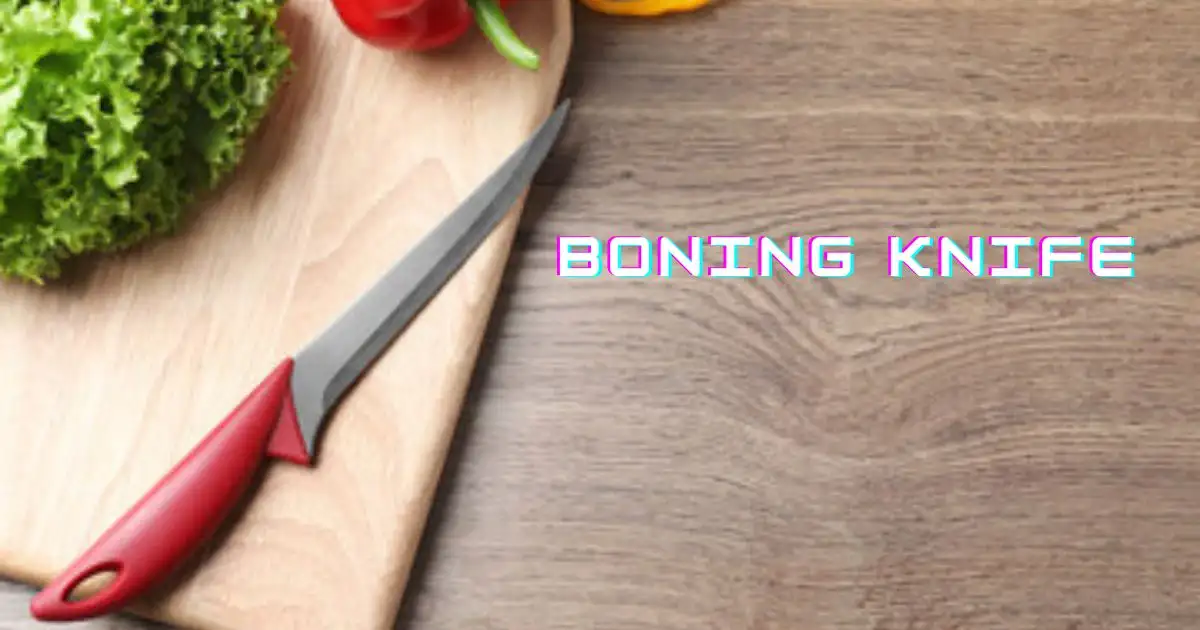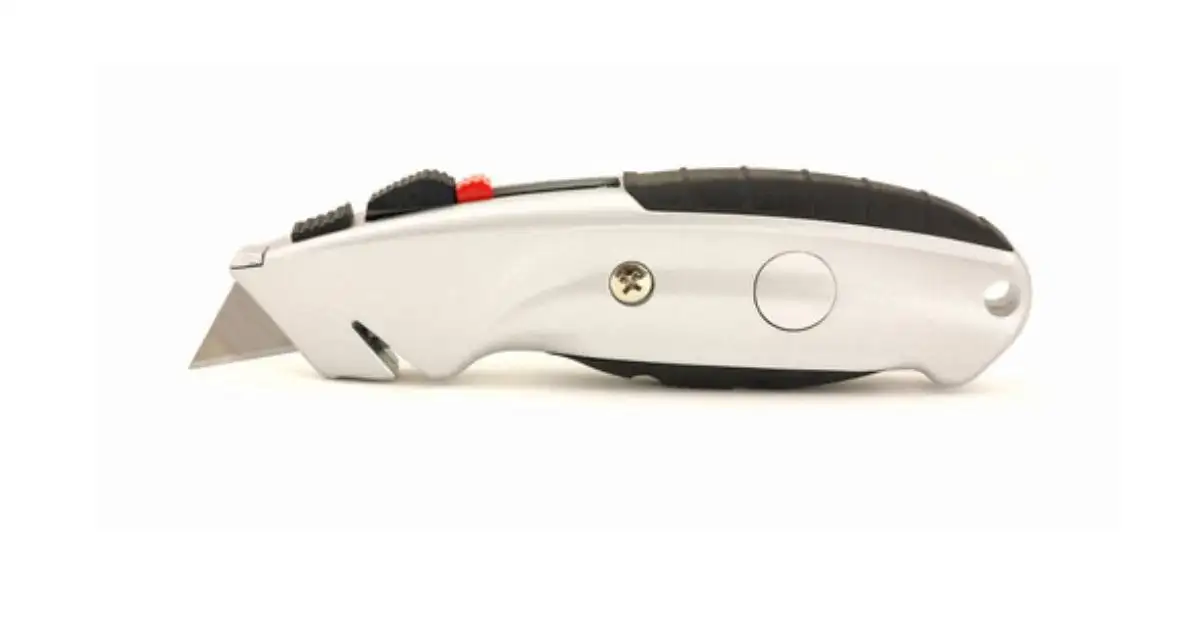“Knife Care 101: How Frequently Should You Sharpen Your Kitchen Knives?”
Table of Contents
ToggleIntroduction:
A well-managed kitchen is a sign of a professional cook because it maintains your kitchen according to the skills that are essential for the care and maintenance of the kitchen. Similarly, the kitchen has essential tools that play an important role in culinary artwork. Kitchen knives are one of the most common and essential parts of the kitchen and the creativity of a home cook and a professional cook But one question that arises in everyone’s mind is after using a knife and keeping it in good condition, how often do you sharpen your kitchen knives? The sharpness of kitchen knives makes the home cook’s or professional chef’s experience good for the preparation of food and other cooking experiences. In this blog, we’ll explore kitchen knives to solve the puzzle of the ideal sharpening schedule. We also explain some basic sharpening techniques that will be helpful in your kitchen experience.
The Significance of Well-Maintained Kitchen Knives:
A kitchen is one of the best places in the home where raw ingredients are transformed into delectable meals, and the primary tool that is most commonly used is a kitchen knife. The importance of a sharp knife cannot be ignored. Here’s why
1:Efficiency in the Kitchen:
Sharp knives make every cutting task more efficient. When your knife is sharp, it glides through food effortlessly, reducing the effort you need to exert. This means you can chop, slice, and dice with precision and speed, saving you time and energy during meal preparation.
2:Precision and Control:
Dull knives are unpredictable. They can slip off the surface of the food or veer off course, leading to uneven cuts or even accidents. Sharp knives, on the other hand, provide better control, allowing you to cut exactly where you intend with confidence.
3:Safety:
Paradoxically, sharp knives are safer than dull ones. Dull blades require more force to cut through food, and this added force can lead to accidents. A sharp knife, with its precision and efficiency, reduces the likelihood of slips and injuries.
4:Food Presentation:
Professional chefs do their work perfectly; you’ve watched them do their artwork, and their cuts are very neat and clean. The sharpness of knives enables them to achieve excellent results preparation of dishes and makes their taste better.
5:Food Quality:
When you cut through food with a dull knife, it can crush and damage the cellular structure of the ingredients. This also spoils the flavor of your dishes. Sharp knives, on the other hand, preserve the integrity of your ingredients.
Signs Your Kitchen Knives Need Sharpening:
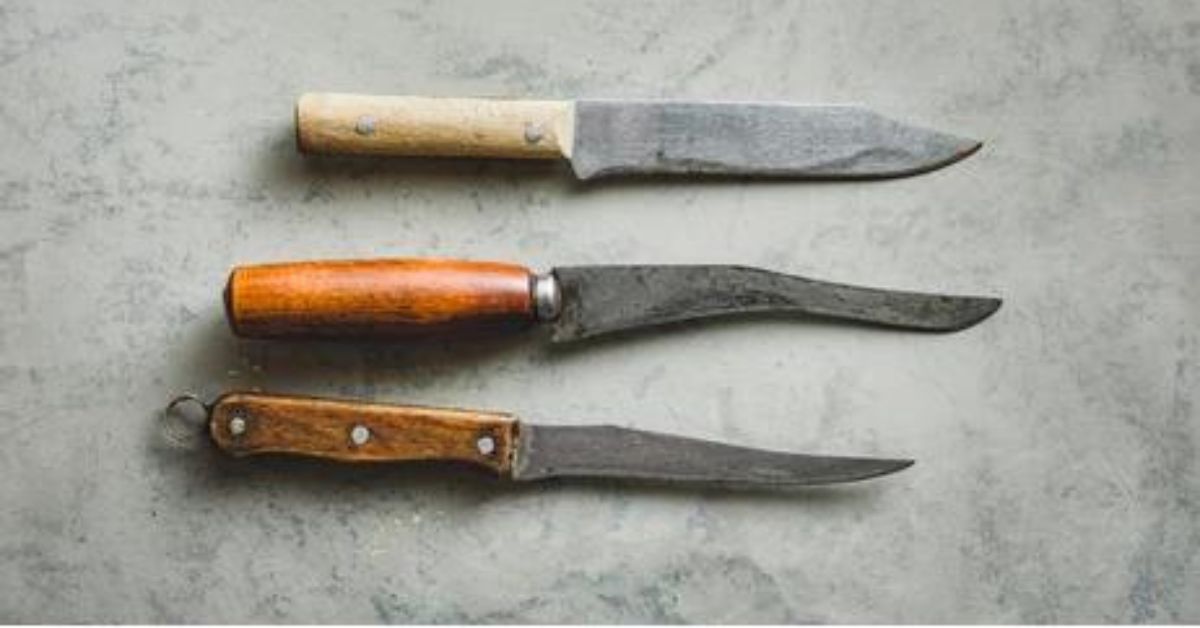
Knowing when your kitchen knives need sharpening is crucial. Understanding the signs of a dull blade can help you keep your kitchen knives maintained for safety and the quality of your food. Here are some important factors that help you maintain the sharpness of your kitchen knives.
- Difficulty in Cutting:
If you find that it’s taking more effort to cut through food items that used to be a breeze, it’s a clear sign that your knife has dulled. This increased resistance can make your kitchen tasks frustrating and time-consuming.
- Tearing or Ripping:
Dull knives tend to tear or rip food instead of cleanly slicing through it. When you notice that lettuce leaves are bruised, tomatoes are squashed, or meat fibres are torn, it’s a sign that your knives are no longer sharp enough.
- Increased Slippage:
Dull knives are more likely to slip off the food’s surface, increasing the risk of accidents. If you’ve noticed your knife slipping or veering off course more often, it’s a clear indication that sharpening is overdue.
- Jagged Edges:
Inspect the edge of your knife blade. If you notice jagged or irregular edges instead of a smooth, continuous edge, it’s a sign that your knife is no longer sharp. These irregularities can affect both cutting performance and safety.
- Increased Food Preparation Time:
When your knives are sharp, food prep is quick and efficient. If you find yourself spending more time than usual chopping, slicing, and dicing, it’s likely due to dull knives that need attention.
- Hesitation to Use a Particular Knife:
Sometimes, you might avoid using a particular knife in your collection because it’s become too dull to be practical. If you have a knife gathering dust because it no longer performs well, it’s time to sharpen it.
- Notch Formation:
Inspect the blade for notches or chips. These can occur over time and may require professional sharpening, especially if they are significant.
How to Sharpen Your Kitchen Knives:
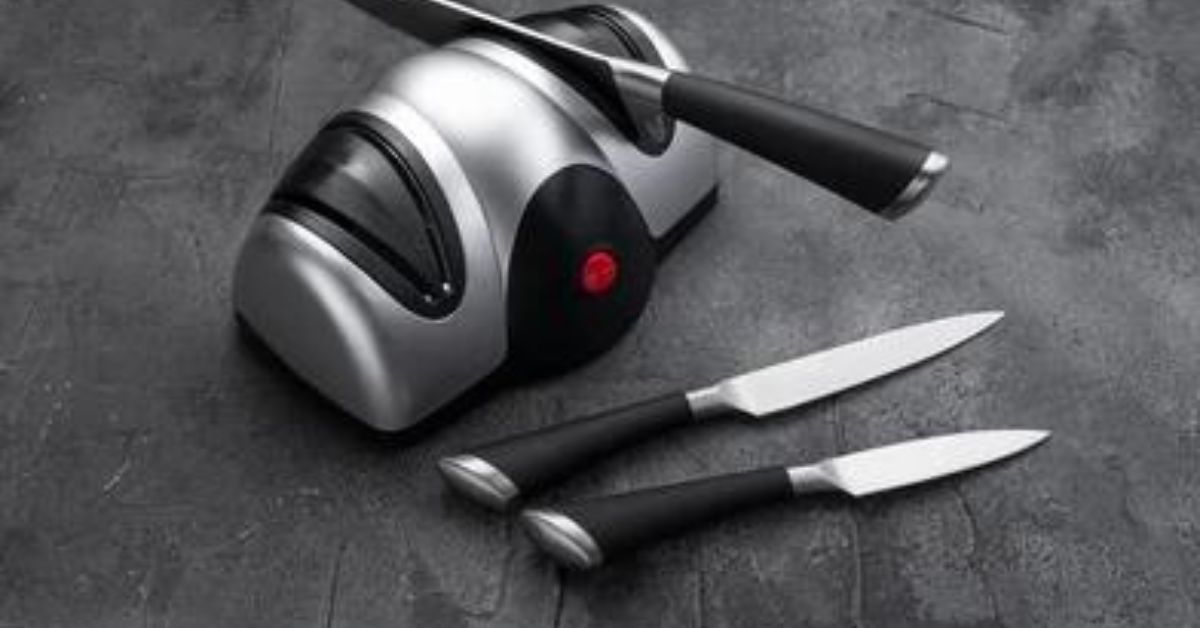
Sharpening your kitchen knives are basic skill that every home cook or professional chef should master. Some common methods are very important to keep your knives always sharp, which are the following:
1. Sharpening Stones (Whetstones):
- Materials needed: sharpening stone, water or honing oil, a towel, and a stable surface.
- Steps:
- Soak the sharpening stone in water for 10-15 minutes, or use honing oil if it’s an oil stone.
- To keep the stone from slipping, place a towel underneath it.
- Keep the knife constant when moving the knife back across the stone.
- Maintain the angle properly which ranges from 15 to 20
- Test the sharpness by slicing a piece of paper or a tomato.
2:Honing Rod (Sharpening Steel):
- Materials Needed: Honing rod.
- Steps:
- Hold the honing rod vertically in your non-dominant hand.
- Hold the sharpness by slicing a piece of paper or a tomato.
- Starting with the base of the blade, slide the knife at a 15-20-degree angle.
3:Electric Knife Sharpener:
- Materials needed: electric knife sharpener.
- Steps:
- According to the manufacturer’s instructions, insert the knife into the slot for sharpening.
- A few times, run the knife through the slot until it is sharp.
- Be cautious not to over-sharpen, as this can remove too much metal from the blade.
4:Manual Knife Sharpener:
- Materials needed: manual knife sharpener.
- Steps:
- Follow the manufacturer’s instructions for the specific manual sharpener you have.
- Typically, this involves drawing the knife through the sharpener a few times in both the coarse and fine slots.
- Professional Knife Sharpening Services:
- Materials needed: none.
- Steps:
- Find a reputable professional knife sharpening service in your area.
- Drop off your knives for sharpening or send them by mail.
- Professionals will use specialised equipment and techniques to restore your knives to their optimal sharpness.
The Importance of Professional Sharpening of kitchen knives
Professional sharpening is essential for a home cook or professional chef because it plays an important role in the sharpness and performance of kitchen knives. Here are some professional sharpening tips that you must follow:
1:Specialized Equipment:
- Professionals use specialized sharpening equipment and techniques that the average home cook may not have access to. These tools can restore your knife’s edge more effectively and precisely
2:Blade Preservation:
- Over-sharpening or using incorrect techniques can remove too much metal from the blade and shorten its lifespan. Professionals know how to balance the sharpening process to extend the life of your knives.
3:Removing Nicks and Damage:
- If your knife has significant nicks or damage, professionals have the expertise and equipment to repair and restore the blade to its optimal condition.
4:Honing and polishing:
- Professional sharpening services often include honing and polishing the blade, ensuring it’s not only sharp but also well-aligned and smooth, enhancing its cutting performance.
5:Consistency:
- Professionals provide a consistent level of sharpness across all your knives. This ensures uniform performance in your kitchen and is especially important for
- professional chefs.
Sharpening Mistakes to Avoid:
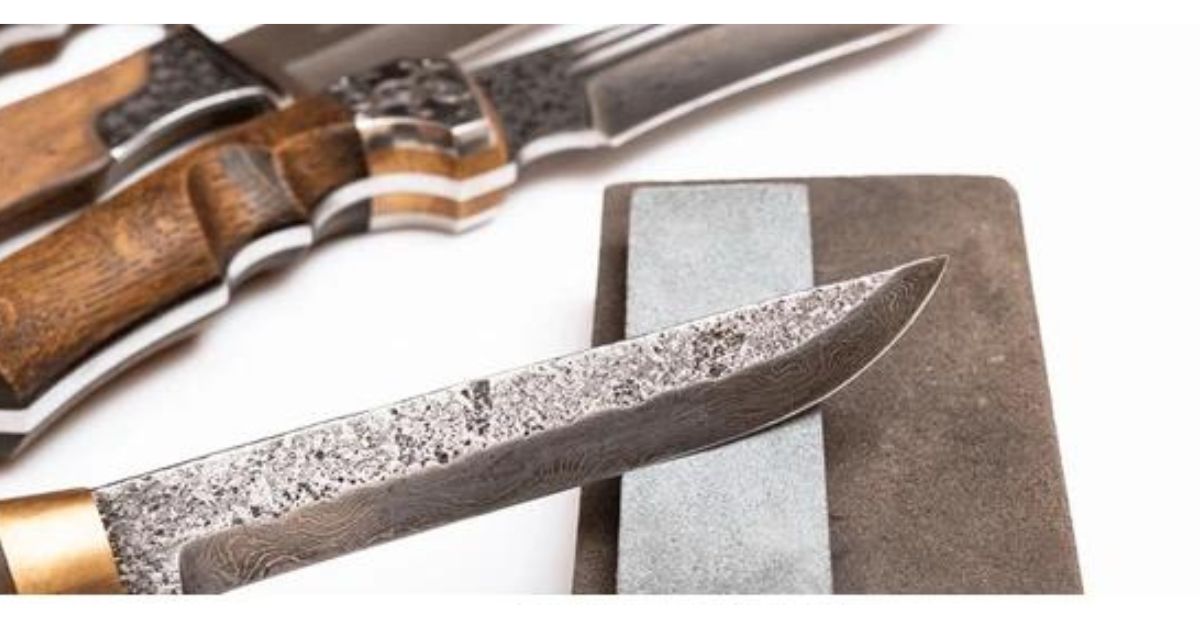
Here are some sharpening mistakes to avoid that can be very useful in sharpening kitchen knives.
Inconsistent angles:
- One of the most common mistakes is maintaining inconsistent sharpening angles. Each knife type has an optimal sharpening angle, typically around 15-20 degrees. Failing to hold a consistent angle on both sides of the blade can result in an uneven edge and diminished cutting performance.
Over-sharpening:
- Sharpening a knife too frequently or excessively can lead to the removal of too much metal, shortening the lifespan of your knives. Follow the recommended sharpening intervals and avoid excessive strokes.
Using the Wrong Grit:
- Starting with too fine a grit on a sharpening stone can be ineffective if your knife is very dull. Similarly, beginning with a coarse stone on a relatively sharp knife can be overly aggressive. Use the appropriate grit for your knife’s condition.
Neglecting Honing:
- Honing with a honing rod is an essential step between sharpening sessions. Neglecting honing can cause the edge to fold or curl, diminishing sharpness. Hone your knife before or after each use to maintain its edge.
5:Rushing the Process:
- Sharpening should be a deliberate and patient process. Rushing through the sharpening routine can lead to inconsistent results and potential errors. Take your time to ensure precision.
6:Neglecting Maintenance:
- Regularly clean and maintain your sharpening tools. Dirty or clogged sharpening stones or rods can hinder the sharpening process and lead to uneven results.
7:Overlooking Professional Services:
- While home sharpening is essential, there are times when professional sharpening is necessary. Avoid the mistake of thinking that home sharpening is always sufficient, especially for high-quality or severely damaged knives.
Conclusion:
A kitchen knife is a faithful companion in the world of culinary artistry. It enables you to craft delectable dishes and express your creativity. A sharp knife and its regular maintenance are not only indispensable tools but also safer ones. In this blog, we’ve explored the significance of sharp kitchen knives and the signs that indicate when it’s time for sharpening. We Also explain many professional sharpening techniques, and maintenance tips that help you keep your kitchen knives remain sharp and also save you money. Professional sharpening services offer a valuable alternative when your knives need expert care and restoration. These services bring expertise, specialized equipment, and a level of precision that can breathe new life into your beloved blade.
FAQ
1:How can I tell if my knife needs sharpening?
Ans:Signs that your knife needs sharpening include increased difficulty in cutting, tearing, or crushing food, uneven slices, and an overall decrease in cutting performance.
2:What is the ideal angle for sharpening kitchen knives?
Ans:The ideal angle for sharpening kitchen knives must be 15-20 degrees, which maintains the consistency of the angle on both sides of the blade for a sharp edge.
3:How often should I hone my knives with a honing rod?
Ans:The finishing with a honing rod should be done before or after each use of your knife. It helps realign the edge and keeps the blade sharp between more extensive sharpening sessions.
4:Can I use a sharpening steel (honing rod) to sharpen my knives?
Ans:Sharpening steels (honing rods) are used for honing and realigning a knife’s edge, not for actual sharpening. They are essential for maintenance but won’t restore a dull blade to sharpness.
5:Can I sharpen serrated knives at home, or do I need professional help?
Ans:Serrated knives can be sharpened at home using specialized sharpening tools designed for serrated edges. However, if you’re uncomfortable with this or need significant repair, professional help is recommended for serrated knives.
.


